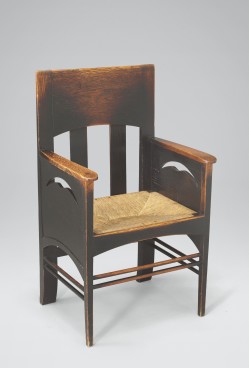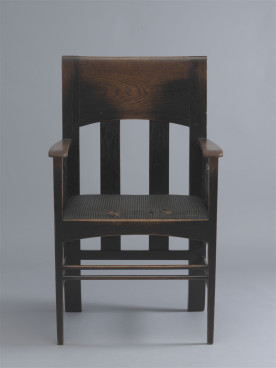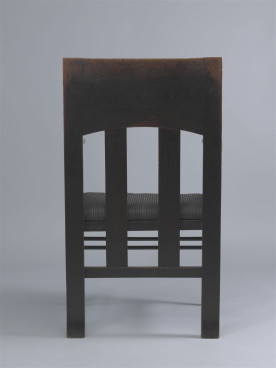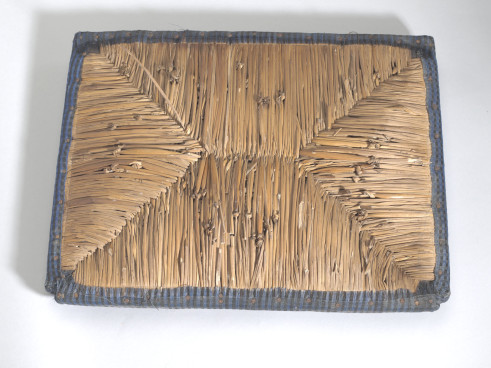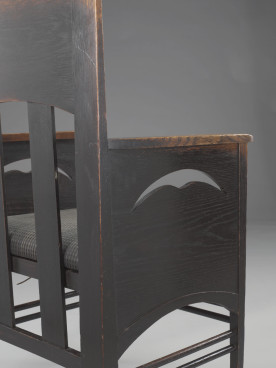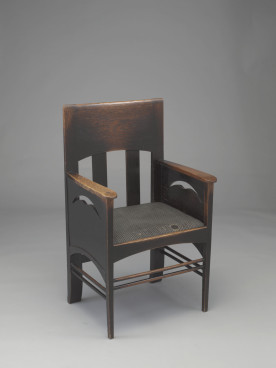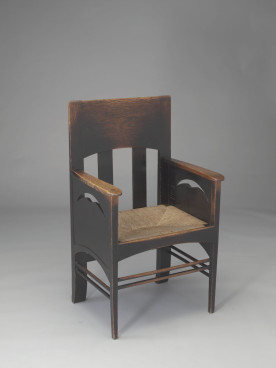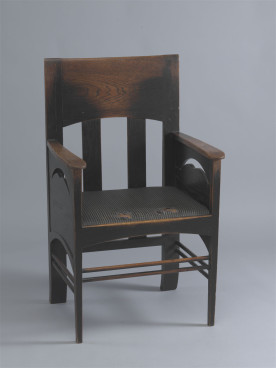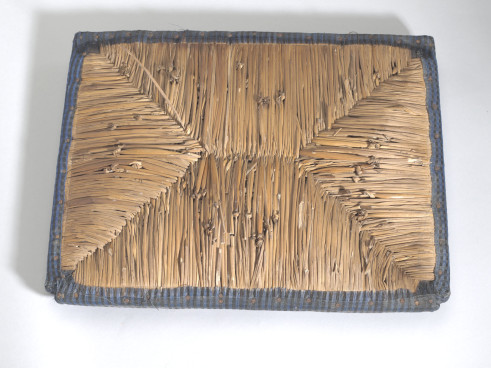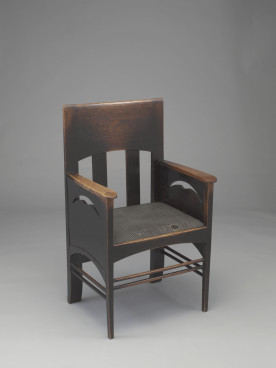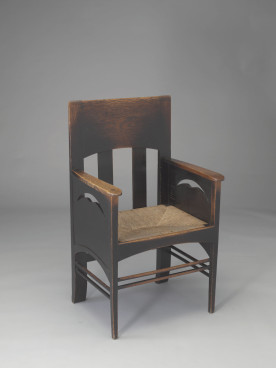Armchair, c.1897
Stained oak and original rush
This chair was designed by Charles Rennie Mackintosh for the Argyle Street Tea Rooms, Glasgow. It was probably made by Francis Smith & Sons, Glasgow, and is one of a pair from a larger set.
Adam Bowett Catalogue 14/08/2012
Description
An armchair, 1897. It is made of black-stained oak, with a low rectangular back with a broad and deep top rail arched on its lower edge and two vertical splats below, between slightly curved flat arms and panelled sides pierced with a flying bird motif, over a woven horsehair seat in blue and silver raised on square tapered legs joined by paired spindle stretchers all round, except at the back, which has a rectangular stretcher.
Dimensions
H: 40” (102cm) Seat height: 19” (48cm) W: 26 ½” (67cm) D: 26 ¾ “ (68cm)
Designer/Maker
C. R. Mackintosh
Materials
Oak, horsehair and other upholstery materials
Dating Criteria
This chair was designed by Charles Rennie Mackintosh for the Argyle Street Tea Rooms, Glasgow, in 1897.
Construction
The back frame is composed of two vertical posts into which the broad top rail is dowelled. The two splats are tenoned up into the top rail and descend to the rear stretcher into which they are tenoned. The rear stretcher is probably tenoned into the rear posts. The sides are constructed as follows; the arm is fixed to the back posts with two screws (plugged), and to the top of the front leg with a large diameter wedged dowel, which presumably is part of the front leg; the panelled side is screwed to the side seat rails. The front seat rail is probably tenoned into the front post and the seat itself rests on four battens screwed around the inside of the chair. The turned stretchers are dowelled.
Condition
The ebonised finish is distressed and worn in the obvious places and appears original. There is small crack upper left of the top rail due to shrinkage. There are cracks to both side panels associated with the flying bird motif. The horsehair seat cover has worn through at the front edge, revealing woven rush below.
Additional remarks
The presence of a rush seat beneath the horshair suggests that the original design was for a rush seat, the horsehair being installed to match the décor chosen for the Tea Rooms.
References
Roger Billcliffe, Mackintosh Furniture, Cambridge (1984).
Provenance
Argyle Street Tea Rooms
Agnew family Glasgow, who purchased them form Miss Cranston in 1920s.
Purchased from Paul Reeves, October 1997

